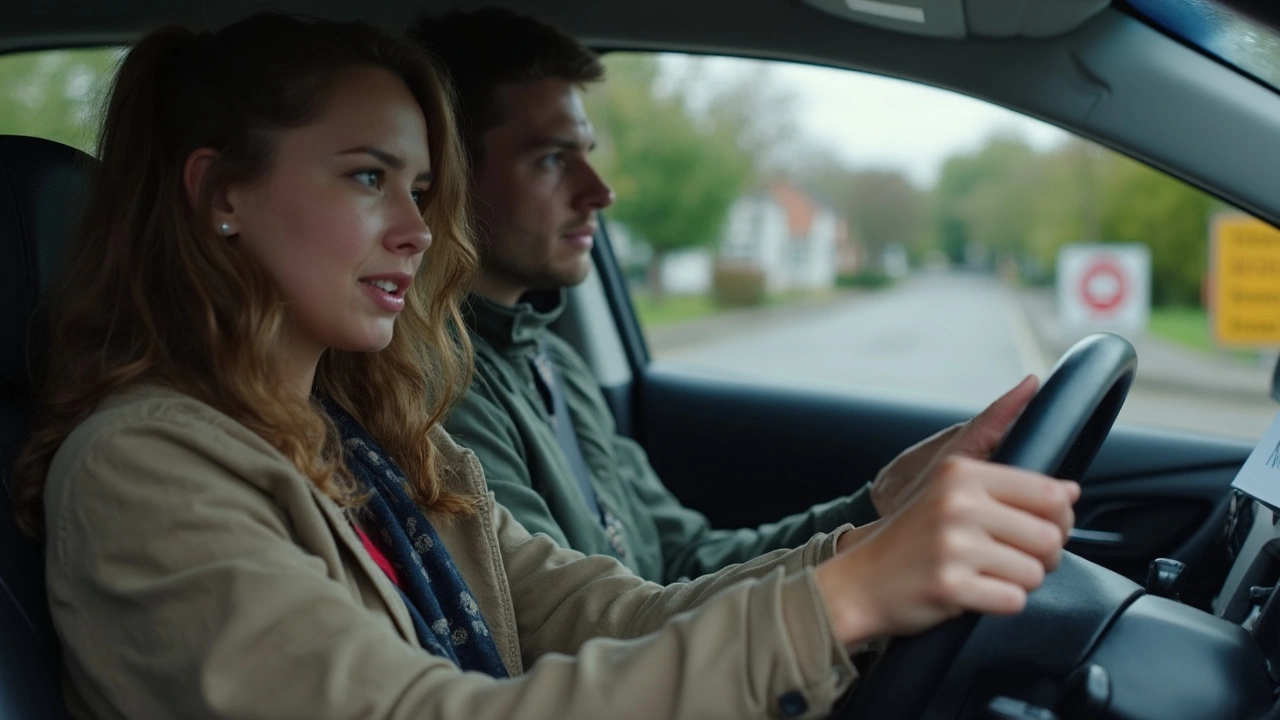Virginia Driving Test Tips – Your Quick Guide to Passing
Feeling the pressure before your Virginia road test? You’re not alone. Most people worry about the same things: the handbook, the car, and the examiner’s expectations. Below are simple, down‑to‑earth tips that help you turn nerves into confidence and walk out with a passing grade.
Know the Rules Inside Out
The Virginia Driver’s Handbook is the foundation. Skip the skim‑read and actually quiz yourself on the signs, right‑of‑way rules, and speed limits. Many free apps let you test your knowledge with multiple‑choice questions just like the written exam. Spend 20 minutes a day for a week and you’ll remember the details without staring at a page on test day.
Don’t forget the new changes. Virginia recently updated rules on roundabouts and lane‑changing. A quick glance at the DMV’s “What’s New” section keeps you from getting caught off guard.
Prepare Your Test Car
Pick a car that you feel comfortable in. It doesn’t need to be fancy—just clean, well‑maintained, and fully functional. Check the lights, brakes, turn signals, and windshield wipers the night before. A broken taillight can cost you a point, and a squeaky seat can make the examiner doubt your focus.
Adjust the seat and mirrors so you have a clear view of the road and your own position. Comfort matters; if you’re adjusting the seat during the test, you’ll waste time and look nervous.
Practice the Core Maneuvers
Virginia examiners watch for smooth, controlled moves. Master these key skills:
- Three‑point turn – keep the car straight and use the parking brake when needed.
- Parallel parking – aim for the curb, avoid hitting the car ahead, and use the reference point technique.
- Hill start – engage the handbrake, release the clutch slowly, and add gas before letting go of the handbrake.
Do each maneuver ten times in a quiet parking lot. The more you repeat them, the less you’ll think about each step during the real test.
Day‑Of Strategies
Arrive at the DMV at least 15 minutes early. Use that time to sit in the car, take a few deep breaths, and run a quick mental checklist: lights on, seatbelt fastened, mirrors adjusted.
When the examiner gives instructions, repeat them back in your own words. This shows you understood and helps avoid miscommunication.
Stay calm at every stop. The examiner expects you to stop fully, check mirrors, and proceed when safe. Rushing through a stop sign is a common cause of failure.
Avoid Common Mistakes
Don’t forget to signal at least three seconds before turning or changing lanes. Forgetting the signal is a quick ‘fault’ that adds up.
Watch your speed. Virginia’s limit is strictly enforced; driving a few miles over can lead to an automatic fail for a major fault.
Keep both hands on the wheel unless you’re shifting or checking mirrors. One‑hand driving looks sloppy and may be marked as a minor fault.
Finally, treat every mistake as a learning point, not a disaster. If you miss a turn, correct safely and continue. Examiners understand that a single slip doesn’t equal a failed driver.
With these tips in your pocket, you’re ready to walk into the DMV, sit behind the wheel, and pass your Virginia driving test on the first try. Good luck, and drive safe!
- June 30 2025
- 0 Comments
- Rowan Cavendish
Automatic Fails on the Virginia Driving Test: What Every Driver Needs to Know
Find out exactly what causes automatic fails on Virginia's driving test. Get real tips, need-to-know mistakes, and key facts for passing on your first try.
- Driving Lessons (41)
- HGV Training (31)
- Driving Test Tips (31)
- Driving Test Booking (26)
- Driving Licence Renewal (23)
- Driving Theory Test (21)
- Pass Plus Course (15)
- Driving Tips (15)
- Intensive Driving Course (15)
- Driver Licensing (14)
Categories
- December 2025 (12)
- November 2025 (13)
- October 2025 (21)
- September 2025 (5)
- August 2025 (8)
- July 2025 (30)
- June 2025 (30)
- May 2025 (30)
- April 2025 (31)
- March 2025 (30)
- February 2025 (28)
- January 2025 (34)
Archives
- driving lessons
- driving test
- driving tips
- intensive driving course
- driving test tips
- HGV training
- learn to drive
- driving theory test
- driver training
- driving test booking
- pass driving test
- HGV driving
- road safety
- driving license renewal
- Virginia driving test
- learner drivers
- safe driving
- Virginia driver's license
- driving license
- learning to drive

